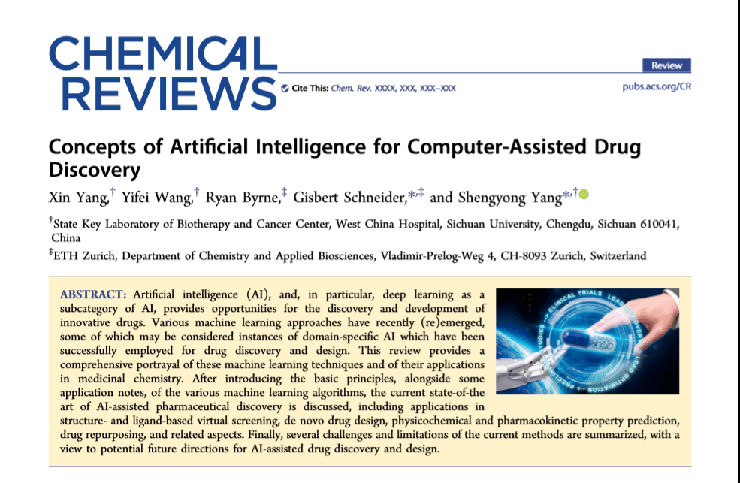
Recently, the research group led by Prof. Yang Shengyong of the State Key Laboratory of Biotherapy of WCH, who is the winner of the Cheung Kong Scholar and the National Science Fund for Distinguished Young Scholars, published a paper entitled "Concepts of Artificial Intelligence for Computer-Assisted Drug Discovery" in the internationally authoritative review academic journal--Chemical Reviews (IF:54.301), founded by the American Chemical Society.
Dr. Yang Xin is the first author of the paper. Prof. Yang and Prof. Gisbert Schneider (from the Swiss Federal Institute of Technology) are the corresponding authors. The State Key Laboratory of Biotherapy, WCH of SCU, is the institute of the first author. This work is supported by the National Natural Science Foundation of China, Youth Project of National Natural Science Foundation of China, National Sci-tech Special Project, 1.3. 5 Project of West China Hospital, and National Postdoctoral Innovative Talents Program, etc.

In recent years, the fast-growing artificial intelligence (AI) technology represented by deep learning is considered as an important engine for a new round of sci-tech revolution and industrial change. It also brings new hope for accelerating the R&D of innovative drugs, and promoting the transition of traditional mode based on target and structure information to the new mode based on data and algorithm. At present, deep learning has been applied in graphic image recognition, automatic driving, and human intelligence games with great success. Despite of these, due to the particularity of innovative drug research and development, the application of deep learning in innovative drug research and development needs to solve many key scientific problems, for example, how to develop representation methods more suitable for the two-dimensional and three-dimensional structure information features of molecules.
This paper comprehensively summarizes the AI algorithms and their applications in pharmaceutical chemistry, including virtual screening based on structure and ligand, de novo drug design, physicochemical and pharmacokinetic property prediction, and drug repositioning. Finally, challenges and limitations of current methods, as well as potential development directions for AI-assisted drug discovery in the future are discussed.